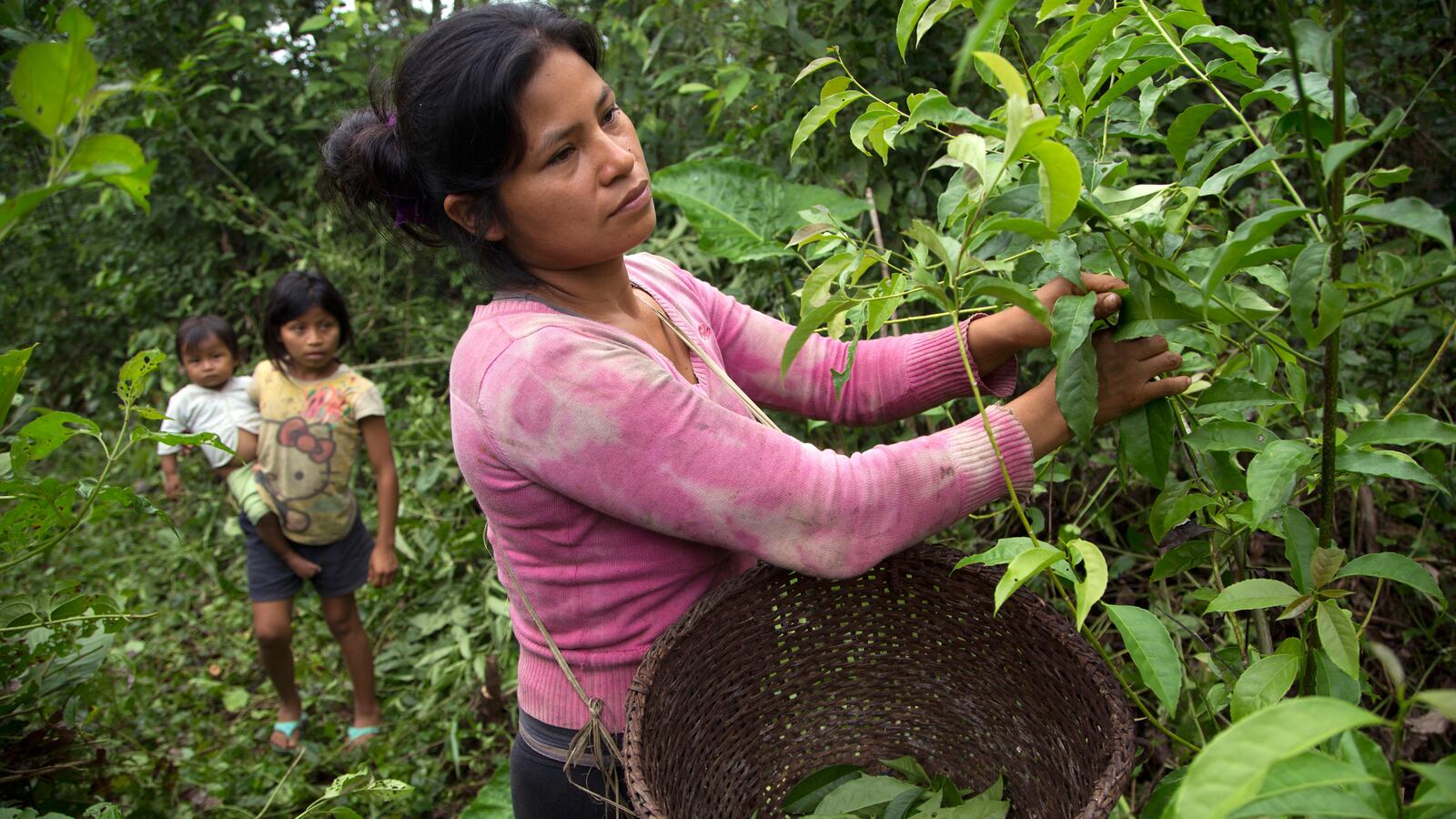It’s 4am on the river. The fire crackles beneath an iron cauldron. A boiling brew is scooped into makeshift bowls—hollowed out coconut halves. Frederico leads the others around the hearth as they gently wash their faces with cupfuls of warm liquid. In the still of the night he breaks the silence and begins: “everything in nature is interrelated…”
What follows over the course of the next two hours, deep in the Ecuadorian jungle, is an elaborate recounting of a local legend about a young woman who discovers the ability to transform into an anaconda after swimming in the dark waters of a magical lake.
Chosen by his grandfather, Frederico is not only the keeper of his clan’s stories—he’s the guardian of guayusa, a seemingly magical plant that grows deep within the rainforest. When brewed as a tea, guayusa unleashes a clean, healthy, and uniquely focused version of caffeine that sustains its drinkers throughout the day. It also floods the body with a welcome dose of antioxidants.
A newfound interest in the power of guayusa has launched the little green leaf into the sudden stratospheres of global recognition. Many already wonder if the plant could one day give coffee a run for its money. And it’s very well possible—especially since its already selling like gangbusters via Amazon’s grocery store.
For years, guayusa was merely a household plant grown in people’s backyards and used privately for a bump of energy in the early morning. “Dried wreaths of guayusa leaves can be found at the local markets, but up until recently it had never been properly sold or distributed,” explains Dan MacCombie, co-founder of Runa LLC, the world’s first and only company that processes and exports the leaf.
“Guayusa was growing all over the place, but people weren’t paying much attention to it until it was commercialized.” MacCombie and his partner Tyler Gage started Runa LLC in earnest in 2009 after encountering the tree during previous trips to the Amazon.
In addition to massive sales on Amazon.com, Runa’s guayusa leaves, which come in a variety of forms including tea bags and glass bottles of pre-brewed juice, are now sold in dozens of brick-and-mortar outlets as well, including Whole Foods, and—according to the Runa website—almost 6000 additional locations across America.
Frederico lives with a hundred of his extended relatives at Sapo Rumi—literally “frog rock” in the local dialect—named for the hallowed petroglyphs upstream carved over 3000 years ago. The village sits along a narrowing vein of the Rio Negro, a tributary of the mighty Amazon. And it’s here—where the western fringes of the rainforest meet the moonscapes of the upper Andes—that the indigenous Kichwa call home.
The Kichwa’s pre-dawn gatherings are a chance for kith and kin to analyze their dreams from the night before, retell the tales of ancient tribal lore, and set plans in motion for the day ahead. They boil the leaves of the guayusa tree in the gurgling centerpiece, and gently sip its tea-like drink.
Guayusa is their power source. Every morning Frederico takes the dried leaves of the precious guayusa tree and steeps them in a large dark pot. He takes careful sips while passing down the collective knowledge of his ancestors, accrued over countless generations. It’s been done this way for as long as man can remember.
No one knows for certain where guayusa was first grown, but several theories exist about its origin. Many believe that the once-nomadic Kichwa walked it across South America as they made their way from present-day Argentina to the eastern realms of Ecuador. Others reckon that the Kichwa bred a separate species of leaf from the sour-tasting yerba maté to yield a more palatable flavor when steeped in boiling water.
“My ancestors are guayusa,” posits Frederico, with a more mystical approach to the genesis theory. In Kichwa culture, it is believed that the plant grows up from the ground above their buried dead; “my grandfather turned into guayusa when he passed” he adds.
For those like Frederico, who have made their lives under the canopy of the Amazon, guayusa isn’t just a cardinal source of energy—it is quite literally the lifeblood of the Kichwa people.
But more bizarre than its cultural significance and origin, is the fact that guayusa can’t actually grow on its own. Though hearty enough to withstand the shady recesses of the rainforest, the durable jungle plant doesn’t have seeds to get sprinkled about by the wind. This means humans are unequivocally responsible for the proliferation of the plant—in order for more guayusa to grow, one must cultivate another crop by breaking a branch off the tree and replanting the cutting in a new location.
Guayusa’s reliance on cultivation speaks to the agricultural acumen of the ancient Kichwa. Whether or not guayusa is a product of selective breeding, the Kichwa have learned to harness its power.
Not only does guayusa possess the same amount of caffeine as a cup of coffee, it also contains theobromine, which tempers the jitters caused by overuse. With double the antioxidants of green tea, it’s also believed to possess incredible curative properties, many of which have yet to be discovered.
“Other plants like coffee have long been an export in Ecuador’s eastern provinces, but dealing in guayusa is an entirely different endeavor. Unlike coffee, guayusa is deeply connected to the Kichwa people,” reminds MacCombie, who set up Runa Foundation with Gage to run in tandem with their newly founded commercial enterprise.
While MacCombie and Gage saw a potential for booming business the likes of açai and quinoa, they also wanted to lay down the groundwork for a mutually beneficial system that would prevent the future exploitation of the indigenous farmers.
The Runa Foundation thus became the arbiter of fair trade regulations as well (Runa LLC has been fair trade certified since 2011), acting as a halo organization to safeguard the rights and welfare of the new guayusa growers, who now number over 3000 in the valleys of Napo province.
In fact, the business of guayusa is currently one of the few commodities traded around the world that completely lacks a middleman. Runa visits all of its cooperating farmers and pays them directly—$0.35 per pound (higher than both the sale of coffee and cacao)—before bringing the leaves back to factory for drying and processing.
At the private Runa facility in the village of Archidona—the only guayusa factory in the world—Runa also sponsors a formalized research program dedicated to understanding how the guayusa tree thrives, and making sure its reaping doesn’t impact the delicate balance of the rainforest. “It takes about two to three years to grow an adult guayusa tree, and we’re taking the necessary steps to make sure we have the supply as our demand increases,” MacCombie adds.
MacCombie projects that over a million pounds of leaves will be exported this calendar year.
And next, perhaps, it won’t be long before we’re all hip to Frederico’s ways and swapping out our morning cup of joe for the boost of this magical green leaf.





